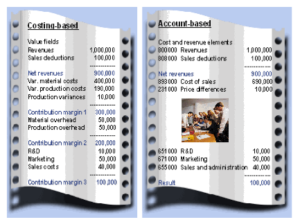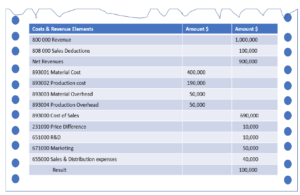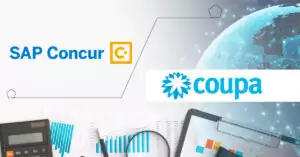Cost and Profitability Analysis, popularly called as COPA is one of the key differentiators of SAP among its peers. While SAP is a transaction processing package software, there are a few analytical reporting capabilities are built in such as Logistics Information System (LIS). COPA is one such analytical tool that offers immense business value to Finance, Cost Controllers, Finance Directors and CFOs. COPA is a big blessing for mid-size enterprises that uses SAP and do not have online analytical processing (OLAP) infrastructure such as SAP BW. COPA was extensively leveraged by all enterprise that are running their business on SAP for ages.
Prior to S/4 HANA
In ECC6 version of SAP R/3 system, COPA functionality offered analytical reports based on either accounting or costing. The fundamental difference between these two are to do with source of data and cost break up details of cost of goods sold. In case of accounting-based COPA, source of data is General Ledger Accounts, and it will not have break up of cost of goods sold. Whereas in case of Costing based COPA, one can source data from logistics table with predefined or customized characteristics with corresponding value fields and get break up of cost of goods sold but will need reconciliation with Financial Accounting

Then, SAP recommended usage of Cost based COPA during R/3 ECC6 era.
The difference between Account-based COPA and Costing-based COPA is explained below:

After S/4 HANA
COPA – Classical School of Thought
S/4 HANA is the latest release of SAP Core ERP application. As we all are aware, HANA is a proprietary in-memory database of SAP which is used as back-end database for S/4 HANA Core ERP application
While developing SAP S/4 HANA Core ERP, SAP rearchitected the database structures, particularly FICO database tables and simplified the solution design by more closely integrating Financial Accounting and Controlling (modules)/ functionalities of SAP. Couple of significant changes are: (1) Several separate tables of FICO in ECC6 were combined and single table for planning and actual, one each, had been done ACDOCP is planning table and ACDOCA is actual table (2) Chart of Account in Financial Accounting and Cost Elements master data in Controlling have been merged and in S/4 HANA Cost elements are part of Chart of Accounts with additional attribute mention.
With the above changes in S/4 HANA, SAP recommends Account based COPA for adoption / implementation. It is known that Account based COPA does not address the breakup of cost of sales / cost of goods sold. To address this, SAP has provided additional configuration to split cost of sales / cost of goods sold based on cost component structure configured in Cost object controlling.
The Account-based COPA coupled with COGS / Cost Sales Split in S/4 HANA is explained below:

The limitation of S/4 HANA Account-based COPA is data derivation from GL Accounts only, unlike in costing-based COPA, where one can bring the characteristics with corresponding value fields from tables other than FICO. SAP provided an option to activate Costing-based COPA in addition to Account-based COPA in S/4 HANA.
Most of the SAP users who have experienced COPA in R/3 and converted to S/4 look at options within S/4 HANA COPA
COPA – New Tech School of Thought
While most of the users, when evaluating profitability reports options, limit their thinking within S/4 HANA Simple Finance, there are certain tech savvy users who look at S/4 HANA holistically and take completely different approach. I call this “New Tech School of Thought”.
SAP S/4 HANA changes are not just limited to application code changes combined with optimization of database structures, but also includes application that is built on in-memory database HANA.
As known, in-memory Database is a revolution. Thankfully, the steep drops in computing costs through cloud computing and more economically available compute components of the server.
The combination of substantial memory available in hardware (servers) coupled with in-memory database offers huge value to enterprise for combining transaction processing systems and analytical processing activities in a single system. Review the below image.
Source: Figure 2.14 – The In-Memory Revolution – How SAP HANA enables Business of the Future by Hasso Plattner & Brend Lukert
Further in support of in-memory database capability, varieties of data visualization tools have been introduced by technocrats. These data visualization tools include Business Objects, Qlik View / Qlik Sense, Tableau, Power BI, among others. Fiori is also often used for preparing and rendering analytical reports. The image shown below, explains how Fiori operates on top of SAP S/4 HANA.
There comes, the ‘New Tech School of Thought” on COPA. The tech savvy users prefer to leverage the new technology combination of SAP S/4 HANA built on in-memory database and data visualization tool to get various profitability report of their choice.
This option no longer limits the users bound by limitations of traditional COPA, be it account-based or Costing-based.
This concept of leveraging HANA in-memory technology and data visualization tool is not just restricted to COPA only, this can be applied and used for other analytical reports such as LIS and dashboards too.
Conclusion
COPA / LIS functionality in SAP was brought by SAP during the era when system hardware capabilities were limited, and databases were of hard drive based. While those features continue, the newer technologies offer yet another different way of getting results. The choice is based on user preferences coupled with enterprise IT strategies.
Authored by: Srinivasan M K (Srinivasan is part of Strategic, Senior Leadership team of Aevitas IT LLC)



